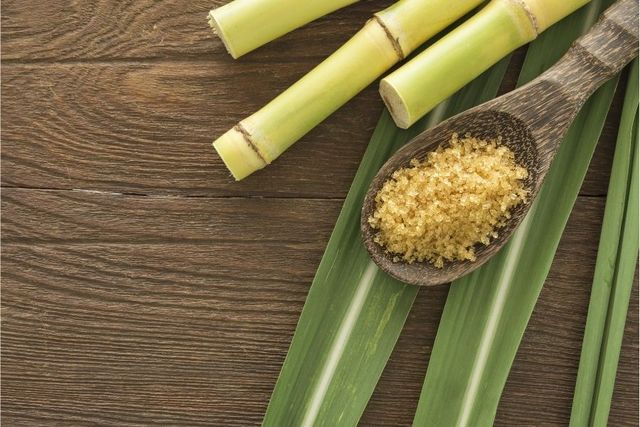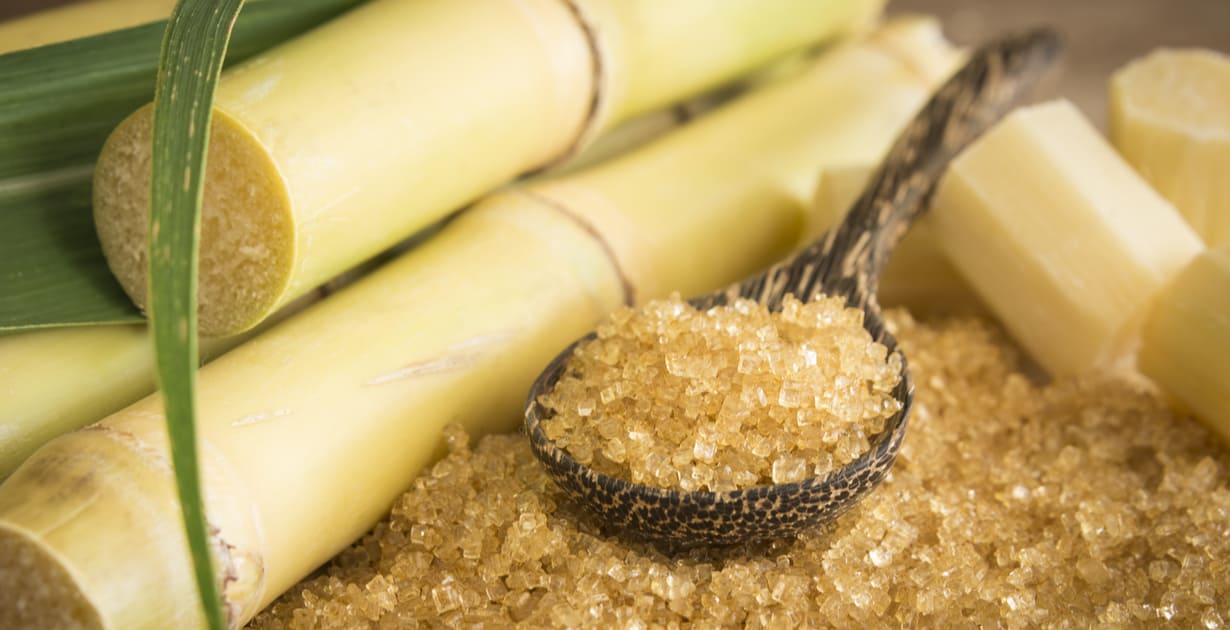All Concerning Sugar Canes: What Are Sugar Canes Used For and Their Function in International Farming?
Sugar walking canes offer as a foundation of global agriculture, primarily recognized for their role in sugar production. They also add to the development of by-products like molasses and ethanol. These elements not just sustain numerous industries but additionally effect economic stability in rural regions. The growing of sugar canes encounters substantial environmental challenges. Recognizing their multifaceted duty prompts additional exploration right into their agricultural methods and sustainability initiatives.
The Agricultural Refine of Sugar Cane Farming
Sugar walking stick growing may vary by area, the fundamental farming procedure stays consistent. The first action includes choosing high-yielding selections ideal for regional climates. Preparation of the dirt is vital, typically calling for tillage and the enhancement of fertilizers to improve fertility. Planting generally takes place throughout the wet period, with farmers utilizing either whole stalks or cuttings to establish new crops.As the plants grow, they require diligent treatment, consisting of weed control, parasite administration, and irrigation, depending upon the ecological problems. Farmers monitor the sugar walking stick's growth cycle, which typically covers 10 to 24 months, prior to gathering. Gathering is labor-intensive, commonly conducted manually or with specialized machinery, guaranteeing minimal damage to the stalks. Adhering to harvest, the walking stick is delivered to processing centers. This precise farming procedure not just supports regional economic situations yet also plays a considerable role in international agricultural techniques, adding to food and power products.
Sugar Production: From Walking Cane to Crystal
The trip of sugar manufacturing starts the minute newly collected sugar walking cane gets to refining facilities. The very first step involves chopping the cane and cleaning to prepare it for extraction. Utilizing high-pressure rollers, the juice is extracted from the crushed cane, causing a pleasant fluid called sugarcane juice. This juice undergoes information, where pollutants are gotten rid of via the enhancement of lime and heat.Next, the made clear juice is focused by boiling it down to develop a thick syrup. This syrup is after that taken shape by cooling, making it possible for sugar crystals to form. The taken shape sugar is separated from the continuing to be syrup, recognized as molasses, with centrifugation.Finally, the sugar crystals are cleaned and dried out, leading to the acquainted granulated sugar (What Are Sugar Canes Used For). This process changes raw sugar walking stick right into a product that is essential to numerous cooking and industrial applications, highlighting the significance of sugar in international farming
Biofuels and Sugar Canes: A Sustainable Future
As the globe progressively looks for lasting power solutions, sugar canes have become an appealing resource for biofuels. The biomass originated from sugar walking sticks can be transformed into ethanol, an eco-friendly fuel alternative that significantly reduces greenhouse gas discharges compared to fossil gas. This procedure not only offers a cleaner power source yet likewise promotes power independence for many countries.In enhancement, sugar cane farming sustains rural economic situations by producing tasks in both farming and biofuel production industries. The use of sugar walking canes for biofuel production also encourages agricultural diversification, which can boost dirt health and wellness and minimize dependence on solitary crops. The spin-offs of sugar cane handling can be used for electrical power generation, furthermore adding to a sustainable energy cycle. As countries venture to meet renewable resource targets, sugar walking canes are poised to play a vital role fit a much more lasting future in the biofuel landscape.

The Role of Sugar Canes in Drink Manufacturing
Sugar canes play a significant role in beverage production, acting as a key ingredient in rum and adding to the sweetness of many sodas. In addition, their all-natural juices are made use of in numerous drinks, enhancing taste and appeal. This adaptability emphasizes the importance of sugar canes in the global drink market.
Sugar Walking Stick in Rum
Rum manufacturing is delicately connected to the cultivation of sugar walking stick, a crucial crop that provides the necessary fermentable sugars needed for fermentation. This procedure starts with the removal of juice from collected sugar canes, which is after that either fermented directly or processed right into molasses. Yeast is contributed to transform the sugars into alcohol, causing a diverse variety of rum styles, from light to dark varieties. The geographical region where the sugar walking cane is expanded considerably influences the flavor account of the rum, with aspects such as dirt type and environment playing vital duties. Countries like Barbados, Jamaica, and Cuba are renowned for their rum production, mirroring the social and historical value of sugar cane within the worldwide beverage sector.
Soft Drinks Sugar Source

All-natural Juice Production Uses
Along with its substantial role in soft drink production, sugar walking stick is additionally crucial in the all-natural juice industry. The juice removed from sugar cane, called walking cane juice, is celebrated for its all-natural sweet taste and distinct taste profile. This juice is frequently consumed fresh in numerous regions, especially in exotic countries, where it is delighted in as a rejuvenating beverage. Furthermore, walking stick juice works as a base ingredient in an array of natural fruit juices and healthy smoothies, enhancing both preference and dietary value. Its all-natural residential properties make it an attractive alternative to artificial sweeteners, appealing to health-conscious consumers. Generally, sugar walking stick's convenience in juice manufacturing emphasizes its value in modern-day beverage offerings worldwide.
Innovations in Sugar Walking Cane Byproducts
Advancements in sugar walking stick results are paving the way for lasting options in numerous sectors. Biofuels derived from sugar walking stick use an alternate energy source, while innovations in lasting packaging are lowering reliance on conventional products. These developments highlight the flexibility and possibility of sugar walking stick past its key usage in beverage production.
Biofuels From Sugar Walking Stick
Just how can the results of sugar cane add to sustainable power solutions? The conversion of sugar walking cane right into biofuels offers a promising avenue for renewable resource. By utilizing the coarse residue, called bagasse, manufacturers can produce bioethanol with fermentation procedures. This bioethanol can work as a lasting option to fossil fuels, minimizing greenhouse gas discharges and dependence on non-renewable sources. Additionally, molasses, one more byproduct, can be fermented to produce biofuels, optimizing source performance. The energy created from sugar walking stick not only supplies a cleaner gas source yet also improves the total economic stability of sugar manufacturing. By integrating biofuel production right into their procedures, sugar cane industries can play a vital role ahead of time lasting power services around the world.
Lasting Product Packaging Solutions
Lasting packaging options are increasingly being created from sugar walking cane results, showcasing the convenience of this agricultural staple. Advancements such as naturally degradable plastics originated from bagasse, the coarse deposit left after juice removal, are acquiring grip. These products supply an environmentally friendly option to standard plastics, minimizing reliance on fossil fuels and reducing carbon footprints. In addition, sugar cane-based product packaging is compostable, breaking down normally without hurting the environment. Business are now exploring these options to line up with customer demand for sustainability. As go right here awareness of plastic air pollution expands, the adoption of sugar cane-derived product packaging is expected to increase, positioning sugar canes as an essential player in the shift to greener packaging remedies in numerous markets.
Economic Influence of Sugar Cane Farming

Sugar walking cane farming has deep roots in numerous economic climates, its financial impact extends far past agricultural manufacturing. This crop offers as a significant income source for millions of farmers worldwide, specifically in creating nations where agriculture is a key source of income. Sugar cane adds to neighborhood economic climates through work development in harvesting, farming, and handling. The industry also promotes development in associated fields such as transport, devices manufacturing, and food processing.Furthermore, sugar cane is a crucial gamer in international profession, influencing worldwide markets and rates. Nations that create sugar walking stick often depend on exports to enhance their economic security. The byproducts of sugar walking cane, such as ethanol and molasses, expand profits streams for farmers and include value to the agricultural industry. Overall, the economic ramifications of sugar walking stick farming are profound, affecting not just farmers yet also entire neighborhoods and national economic climates.
Environmental Factors To Consider in Sugar Cane Growing
While sugar cane farming plays a vital role in many economies, it likewise raises considerable environmental problems that can not be forgotten. The comprehensive use of fertilizers and pesticides in sugar walking cane growing typically causes dirt degradation and water pollution. Runoff from these chemicals can infect nearby water bodies, damaging water ecological communities. In addition, the monoculture methods common in sugar walking stick farming lower biodiversity, making ecological communities a lot more prone to pests and diseases.Deforestation is one more essential problem, as land is commonly cleared to make means for sugar plantations, resulting in habitat loss for wildlife and boosted carbon emissions. In addition, the high water consumption required for sugar walking cane irrigation can strain local water resources, especially in deserts. As global need for sugar remains to increase, resolving these ecological difficulties comes to be critical to assure sustainable methods in sugar walking stick farming.
Often Asked Questions
What Are the Nutritional Benefits of Sugar Walking Cane?
The dietary advantages of sugar walking stick largely include its high carb web content, supplying energy. Additionally, it has vitamins, minerals, and anti-oxidants that may sustain overall health and wellness, though moderation is necessary because of its sugar web content.
Just How Does Sugar Walking Cane Affect Citizen Ecosystems?
Sugar walking cane cultivation can considerably impact local ecosystems by modifying land usage, affecting biodiversity, and requiring considerable water resources. Furthermore, it may bring about dirt degradation and chemical overflow, interrupting bordering environments and wildlife populaces.
What Is the Background of Sugar Walking Cane Cultivation?

Are There Alternatives to Sugar Cane for Sugar Production?
Alternatives to sugar cane for sugar manufacturing include sugar beets, corn, and various tropical plants like sorghum and agave (What Are Sugar Canes Used For). These crops provide varied resources of sweetness, each with distinct farming needs and ecological influences
Exactly How Do Weather Condition Patterns Impact Sugar Cane Returns?
Weather patterns considerably affect sugar walking cane yields via temperature changes, rainfall quantities, and seasonal cycles. Drought or too much rainfall can hinder growth, while ideal conditions improve photosynthesis, eventually impacting i was reading this the amount and high quality of the harvest. The journey of sugar production begins the moment freshly harvested sugar cane arrives at refining centers. The crystallized sugar is separated from the staying syrup, understood as molasses, through centrifugation.Finally, the sugar crystals are cleaned and dried out, resulting in the acquainted granulated sugar. Rum manufacturing is delicately connected to the cultivation of sugar walking stick, a crucial crop that provides the needed fermentable sugars required for fermentation. In addition, the monoculture methods common in sugar cane farming lower biodiversity, making ecosystems extra vulnerable to parasites and diseases.Deforestation is one more vital concern, as land is commonly removed to make means for sugar haciendas, leading to environment loss for wild animals and enhanced carbon emissions. Alternatives to sugar walking stick for sugar manufacturing include sugar beets, corn, and different exotic plants like sorghum and agave.